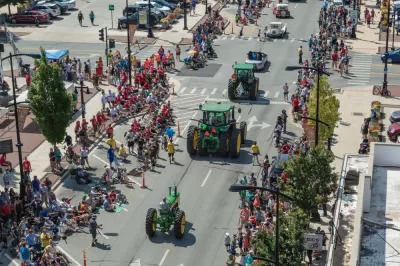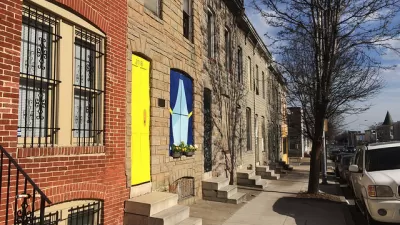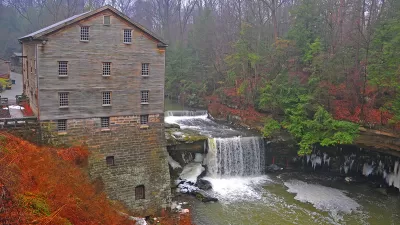Two cities in Illinois are examined as case studies of population decline in the post-industrial economy.

"Two Illinois cities, Rockford and Decatur, are among the fastest-shrinking cities in the country, according to U.S. Census Bureau population estimates, part of an ongoing trend of Midwestern cities losing residents while cities across the Southwest and West continue to grow," reports Patrick M. O'Connell.
Four out five of the largest cities in the United States with the largest population losses since 2010 are in the Midwest, according to O'Connell: "Detroit has lost the most people, about 43,000, since 2010, followed by Baltimore, St. Louis, Cleveland and Toledo, Ohio."
Returning the focus of the discussion to mid-sized Midwestern cities, O'Connell provides the following explanation for population loss in cities like Rockford and Decatur:
David Wilson, professor of geography and urban planning at the University of Illinois at Urbana-Champaign, said Illinois cities like Rockford and Decatur are suffering from structural, systematic forces in the new postindustrial economy. Midsize Midwestern cities in particular, especially those in the so-called Rust Belt that relied on manufacturing, have been hurt in recent years by a lack of federal aid for municipalities and a closure or movement of industrial companies, which leads to higher local taxes and a lack of jobs that can provide for a middle class life.
FULL STORY: Midwestern cities continue to lose population. Two of the fastest-shrinking are in Illinois.

Planetizen Federal Action Tracker
A weekly monitor of how Trump’s orders and actions are impacting planners and planning in America.

Chicago’s Ghost Rails
Just beneath the surface of the modern city lie the remnants of its expansive early 20th-century streetcar system.

San Antonio and Austin are Fusing Into one Massive Megaregion
The region spanning the two central Texas cities is growing fast, posing challenges for local infrastructure and water supplies.

Since Zion's Shuttles Went Electric “The Smog is Gone”
Visitors to Zion National Park can enjoy the canyon via the nation’s first fully electric park shuttle system.

Trump Distributing DOT Safety Funds at 1/10 Rate of Biden
Funds for Safe Streets and other transportation safety and equity programs are being held up by administrative reviews and conflicts with the Trump administration’s priorities.

German Cities Subsidize Taxis for Women Amid Wave of Violence
Free or low-cost taxi rides can help women navigate cities more safely, but critics say the programs don't address the root causes of violence against women.
Urban Design for Planners 1: Software Tools
This six-course series explores essential urban design concepts using open source software and equips planners with the tools they need to participate fully in the urban design process.
Planning for Universal Design
Learn the tools for implementing Universal Design in planning regulations.
planning NEXT
Appalachian Highlands Housing Partners
Mpact (founded as Rail~Volution)
City of Camden Redevelopment Agency
City of Astoria
City of Portland
City of Laramie





























